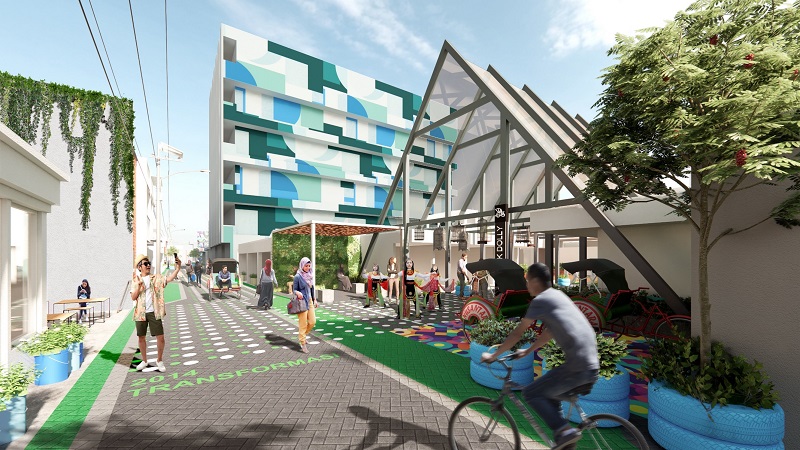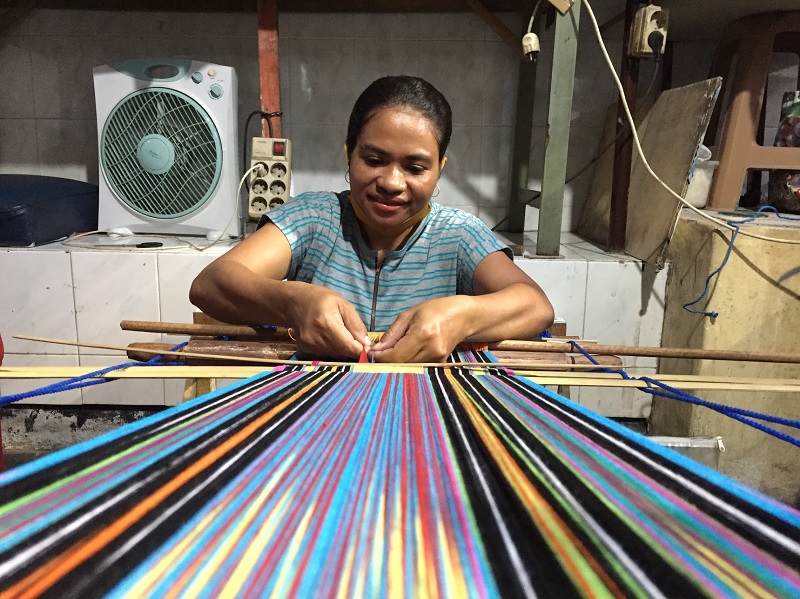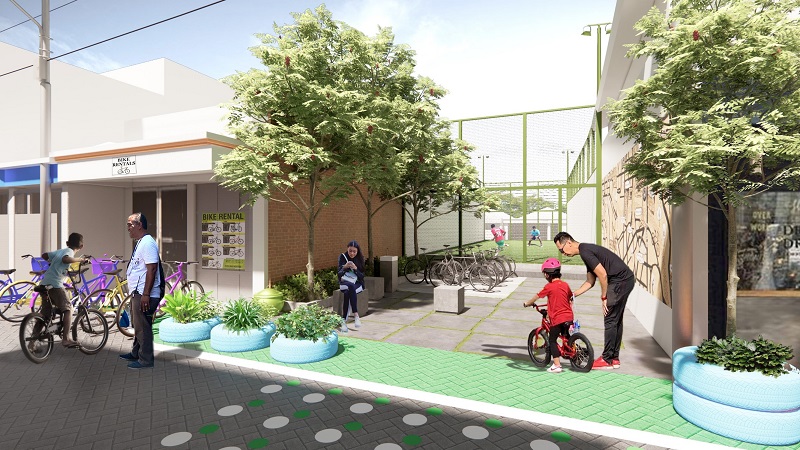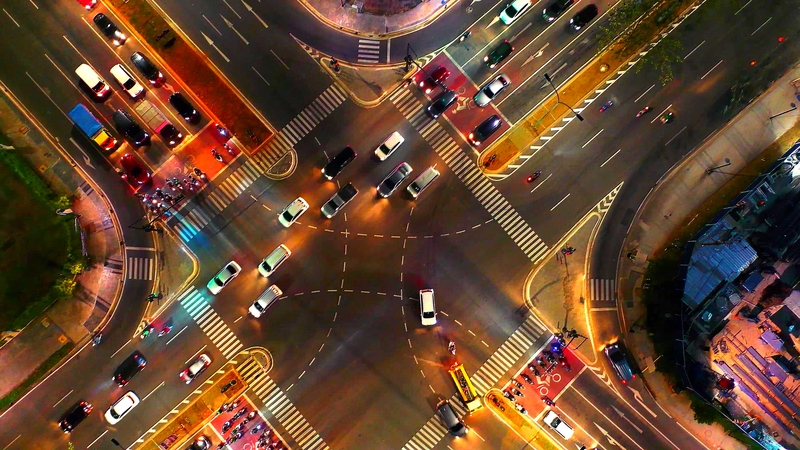
Photo: Broadway Malyan
Regenerating Dolly, a former red-light district in Indonesia
18 May 2022
Monique Suksmaningsih, Singapore Practice Principle at architecture and urban design firm Broadway Malyan, led the Surabaya Urban Transformation project to regenerate Dolly, a former red-light district. In this guest article, she reflects on the initiative and lessons learned.
Close to the centre of Surabaya, Indonesia, is Putat-Jaya, a compact 24-hectare mix of informal settlements and residential that from the 1970s formed the city’s red-light district. In fact, ‘Dolly’, as the neighbourhood is known, was one of the most well-known sex trade industries in all Southeast Asia.
For several decades the district enjoyed a thriving economic ecosystem with jobs for thousands of residents who lived side-by-side with the sex workers. But the vibrant life of the neighbourhood suffered a drastic change in 2014 when the government decided to close all local guesthouses and banned the sex industry – which was illegal – from the area.
Dolly and its community slumped. Since then, several initiatives from the local authority have attempted to regenerate the area and build back economic self-sufficiency, but a lack of social and physical infrastructure have hampered meaningful progress.
In 2019, Broadway Malyan was appointed to a team led by consultants Mott MacDonald as a key delivery partner for the Global Future Cities Programme (GFCP). This is an ambitious project with funding from the UK Foreign Commonwealth and Development Office which aims to carry out technical assistance for a set of targeted interventions to encourage inclusive and sustainable development and increase prosperity while alleviating elevated levels of urban poverty across some of Southeast Asia’s fastest growing cities. It has three thematic pillars: urban planning, transport and resilience.
I was put in charge of leading the work on the GFCP Surabaya Urban Transformation project, and transforming Dolly.
Finding Dolly

While strategically located and close to the city centre, Dolly suffered from a lack of physical and social infrastructure, community disengagement and a major identity crisis.
The impact of losing its livelihood was as evident in the neighbourhood’s physical environment as in its social fingerprint. Groups had formed to support former sex workers, children with HIV and many other vulnerable people. But look a little closer and the place is teeming with talent, entrepreneurialism and pride. There are micro businesses preserving traditional industries such as batik dying and the manufacture of shoes and slippers, as well as in food and drink, which against all odds have intermittently flourished.
At the heart of our commission was the vision of transforming Dolly as a place with the specific aim of improving the wellbeing of residents. We couldn’t do this without them.
We recognised the opportunity this presented, to develop a set of replicable design standards and urban design guidelines to physically regenerate a place in parallel with social and economic measures for gender-responsive and inclusive action in urban development: transformation at a human scale that ensures the rights of women and vulnerable groups to the city and their living space.
We set about shaping a unique transformational process, one that included active engagement of all stakeholders, promotion of income-generating activities, development of a creative urban landscape design and social and physical infrastructure to shore up the future of the neighbourhood.
Changing perceptions
If we could change perceptions of Dolly externally and generate pride internally, that would lead to success. Through our close engagement, it became clear that religion and culture remain an important source of societal cohesion, individual pride and potential tourism. Dolly residents did not want to dismiss their history but rather celebrate it as an integral part of the future. A place branding strategy was developed and crafted in collaboration. It provides a strong visual identity for the district and a suite of brand assets that the people can own and build past the early phases of this programme. Plans are now being developed for a Dolly open-air museum that celebrates the district’s past, present and future, and the recent restoration of a 700-year-old tomb of Mbah Kapiludin will act as a catalyst for tourism.
To help seed new business and support those already existing, we developed a community-based entrepreneur strategy. A bespoke programme of online and offline entrepreneurship training, with local partners and international academia, focused on product innovation and packaging, helping business owners increase their revenue and gain valuable commercial knowledge and skills.
We even helped launch the ‘dollaDolly’ podcast that celebrates local champions.
From red to green
Designs for long-term social stability must of course be matched by those for environmental sustainability. The vision is to turn Dolly from red to green – in line with the UN sustainable development goals underpinning the overall project.
The green kampung programme in Dolly addresses climate crisis issues while at the same time creating a new local economy for Putat Jaya residents. The initiatives that have been implemented include 3R (Reduce, Reuse, Recycle) waste management system, maggot farming, urban and fish farming, waste-to-fuel initiatives and training and education.
A pilot street project creates a blueprint for healthier streets for all. Proposed interventions include remodelling road intersections, introducing safe crossings and encouraging non-motorised transport via bike hire and rickshaw and bike parking areas.
New people-focused spaces have been introduced with socially distanced seating, awareness-raising public art and portable wash basins while street lighting will be replaced with solar power and green infrastructure will act as both a traffic barrier and an eco-corridor for local wildlife.
“First life, then spaces…”

We’ve come on a journey with Dolly’s people from notoriety to forgotten neighbourhood, and now, in summer 2022, the area will be officially recognised as a new tourism ‘kampung’ or village by Surabaya officials.
Is this success for us? Not yet. There is no point building something only to step away and watch it fall. There is still a need to increase the local capacity from the Surabaya City Government for evaluating and monitoring the impact of urban plans, policies and strategies. This is to ensure that the intervention approach can influence at policy level. And on a grass-roots level, we want to elevate the voices of the people and empower the actors who will create a new future for Dolly.
Our programme is empowering children and girls through Creative Industry workshop initiatives, called Dolly Kita Colabs. The workshops, which ran from November 2021 until March 2022, brought in local artists to become mentors for the participants in creative writing, photography, film and videography, and design illustration. Empowering children and girls in this way will ensure a well-educated generation that will help to set a path for gender equality and increase literacy rates, leading to an overall productive economy.
We might have helped shape this new home, but the maintenance of it sits firmly in the hands of a newly established community task force. This is made up of a range of stakeholders but co-ordinated by the community itself. This is vital. The group will act as gatekeepers to change across Dolly, ensuring that local people are at the centre of the decision-making process and tangibly influencing strategies that will impact their future.
I have always admired the Danish architect Jan Gehl and his principle – “First life, then spaces, then buildings. The other way around never works.” The architect’s role is to deliver solutions, but previously only part of Dolly was being considered, so the solution didn’t fit. Dolly’s life comes from its people – all of its people. In our approach we didn’t just listen – we actively sought out those whose voices are most often the quietest. This simplicity is at the heart of its replicability: each neighbourhood, city or country can and should be shaped by those who don’t speak up – because they are often the people who need change the most.










